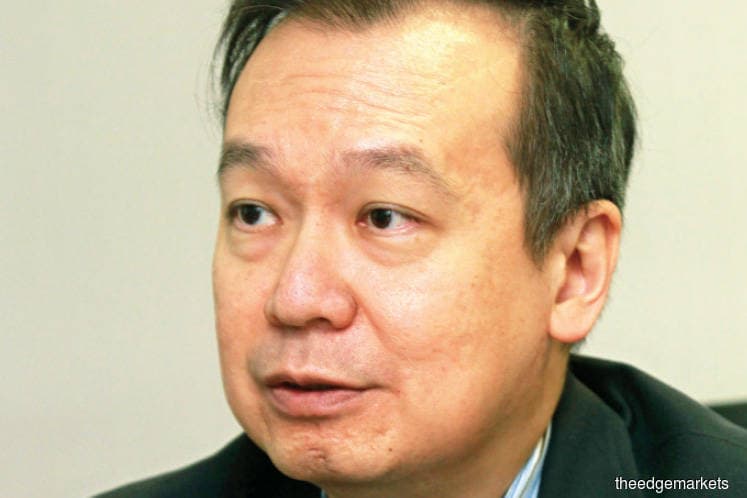
This article first appeared in The Edge Financial Daily on January 30, 2018
PETALING JAYA: Healthcare provider TMC Life Sciences Bhd, whose first-quarter (1Q) net profit surged 42.58% on the back of better cost management, is on an active hunt for complementary businesses for acquisition.
There could be more than one deal to be sealed this year, said its group chief executive officer (CEO) Roy Quek Hong Sheng, who maintains he is always on the lookout for income-generating opportunities.
“We’re looking at businesses within the same sector, especially those with which we can enjoy synergies,” he told the press after the group’s annual general meeting yesterday.
In addition to that, Quek believes TMC needs to grow in size in order to achieve greater economies of scale, and that an acquisition of a complementary business would better enable such a goal.
While Malaysia and Asean are obvious targets, Quek added that the influx of Chinese tourists also presents an opportunity for a step into the healthcare market in China.
“We want to be able to provide our patients with a lifetime experience of healthcare,” he said, adding that this would include providing preventive healthcare and leveraging on medical tourism.
For 1Q ended Nov 30, 2017, TMC reported a net profit of RM6.33 million, against RM4.44 million a year earlier.
Quarterly revenue climbed 15.26% to RM41.73 million from RM36.2 million due to a higher patient load and intensity of cases handled.
Quek said TMC would aim to keep its profit margins intact throughout the rest of the year as it strives to keep a tight rein on the cost of replacing or upgrading its equipment, as well as maintaining staffing overheads — all without compromising on patient care and safety.
When asked how the group would fund any future acquisitions, Quek said many options are available to the group, which include leveraging on its new largest shareholder, Rowsley Ltd.
“Of course, it will be up to the board of Rowsley to determine how much to give us,” Quek said, but noted that the Singaporean company could generate almost S$2 billion (RM5.9 billion) from the exercise of two warrants related to Rowsley’s takeover of TMC. The takeover exercise is still ongoing and has yet to be completed.
Rowsley in December last year acquired 100% of Sasteria (M) Pte Ltd, which holds a 47.3% stake in TMC, from tycoon Peter Lim Eng Hock.
On top of that, TMC will also be reinvesting profits in expansion as Quek sees the company as being in a “high-growth” phase for the next three to five years.
“We should not be viewed as a dividend play,” he said, as the group would prefer to reinvest cash rather than pay the cost of high borrowings.
However, Quek said that the group is planning to finance between 30% and 40% of the RM1.2 billion Thomson Iskandar Medical Hub in Vantage Bay, Johor. The hospital, which will be equipped with an initial 500 beds, is expected to be completed in 2020.
According to its balance sheet as at Nov 30, 2017, TMC’s total borrowings amounted to RM1.78 million.
When asked about concerns over medical inflation, Quek said that “price is sometimes a proxy for quality” and most concerns surround additional fees being charged for the same quality of services provided.
TMC also said that currency fluctuations would also have an impact on cost, as it would affect the prices of medication and equipment.
With an increase in demand for quality healthcare given the growing middle-class population, who are more affluent and understand the need for quality healthcare, the price will surely be pushed up, he said.
TMC is also looking into more ways to handle increasing demand for quality private healthcare.
With the expansion of its Tropicana Medical Centre in Kota Damansara from 200 beds to 600 beds, TMC hopes to see an increase in patients, especially as connectivity is improved to the hospital via the Kota Damansara mass rapid transit station and the completion of the Damansara-Shah Alam Elevated Expressway.
On top of that, Quek targets a higher 25% level of foreign patients for the group from a current 10%.
On the outlook for this industry, TMC believes that as a developing country, Malaysia is behind on most indicators and that there will be significant factors that can drive growth.
“Based on demographic and socio-economic trends, I believe in general demand for healthcare will increase along with demand for quality private care,” said Quek.
Within the region, Quek said Malaysia remains competitive relative to Singapore as procedures are three times less than they cost there.
Meanwhile, the nature of medical tourists in Thailand is slightly different than that of Malaysia and Singapore, as patients tend to go for more of aesthetic treatments, anti-ageing and check-ups, he said.
Looking at what the government has announced recently, with different plans to address an increase in public demand, TMC is also keen on providing services to subsidised patients, given that the government is willing to let the subsidies become portable to the private sector.